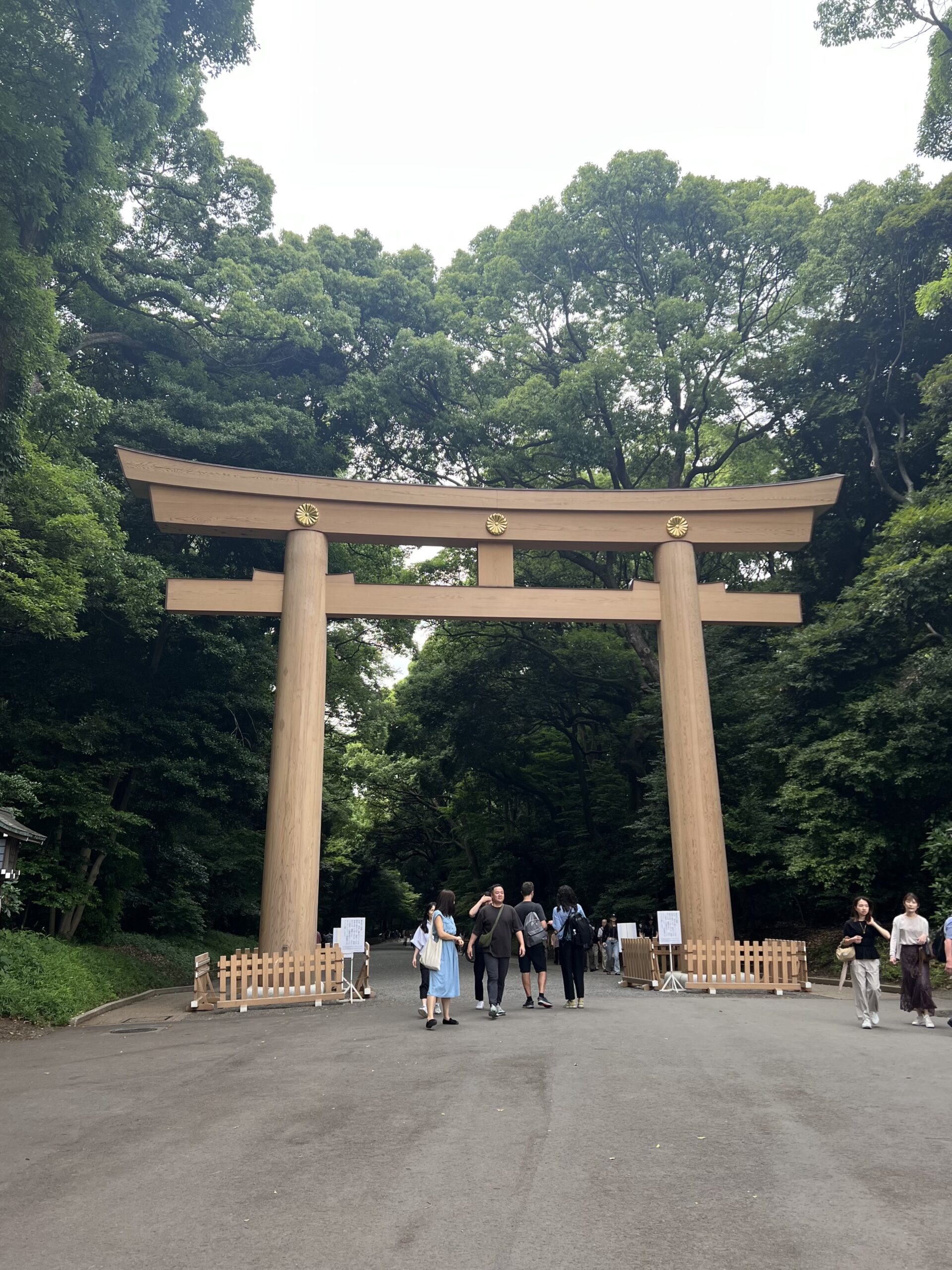
Meiji Jingu Gate surrounded by luscious forest
One of the best ways to learn more about Japanese culture and history is by visiting one of many Shinto shrines, and the Meiji Jingu Shrine is no exception.
Located in the bustling heart of Tokyo, the Meiji Jingu Shrine stands as a tranquil oasis amidst the urban chaos. Steeped in history and spirituality, this Shinto shrine holds a special place in the hearts of locals and visitors alike.
Today, the shrine remains important to many Japanese people as a symbol of progress, attracting millions of visitors every year.
Emperor Meiji’s reign ushered in an era of advancement and Westernization for Japan, known as the Meiji Restoration. Emperor Meiji, along with his consort Empress Shoken, is revered for their leadership in finding balance between cultural tradition and progress.
Following their deaths, the Meiji Jingu Shrine was built in 1920 to commemorate Emperor Meiji and his consort, Empress Shoken. The shrine was completed in 1926 and remains a display of their enduring legacy.
Even amid rapid urbanization, many of Japan’s cultural practices stay carefully preserved. Customs like temizuya, the cleansing of mind and body before prayer, or walking on the sides of the pathway to the shrine and leaving the center open for the gods are still practiced.
The shrine stands as a tribute to their progressive spirit, reminding visitors of the importance of embracing change while staying rooted in the values and traditions that define a nation. The act of worship and prayer at the shrine provides an opportunity for individuals to seek guidance and luck.
In this way, the shrine plays a vital role in addressing the spiritual needs of individuals within a rapidly changing society. As Japan strives for advancements in technology and modernization, the shrine serves as a spiritual haven, by preserving cultural heritage and offering a space for reflection.
The Meiji Jingu Shrine is open every day of the year, and its operating hours are based on the seasons. The shrine has multiple entrances, accessible from Harajuku, Yoyogi and Sangubashi stations.







